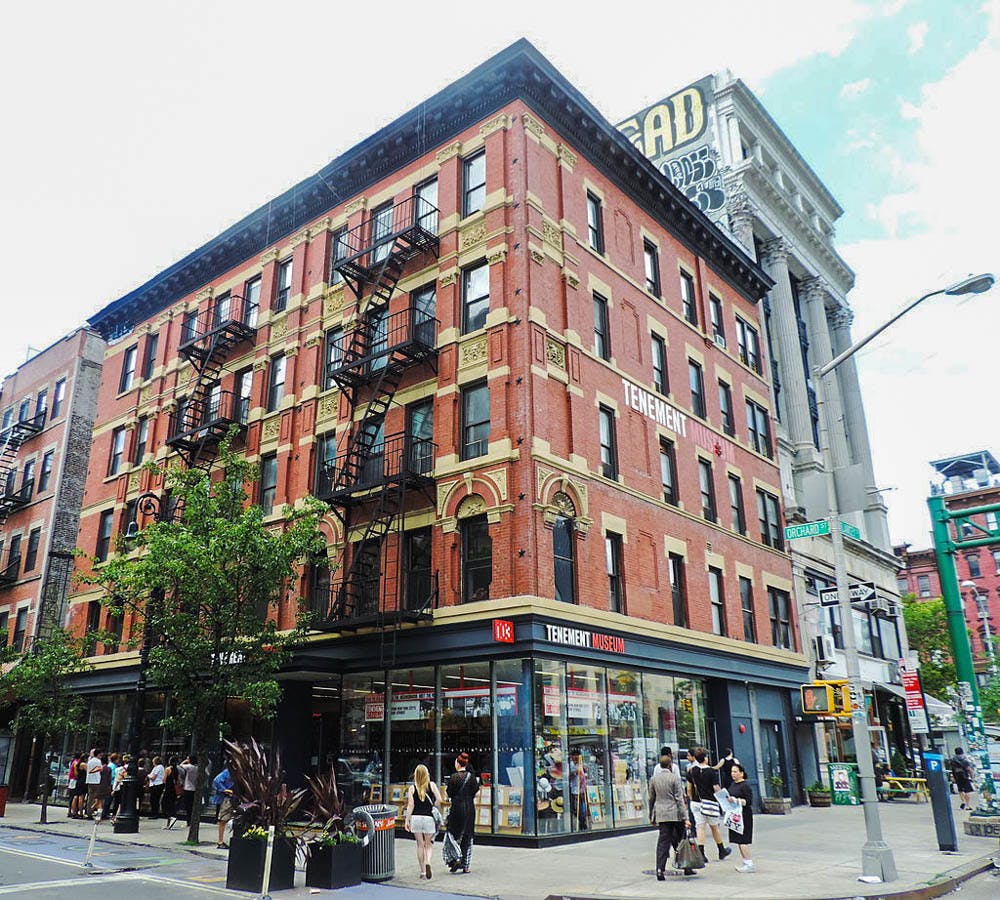The Tenement Museum sits on Orchard Street in the Lower East Side of New York City. From the outside, it looks like most of the other apartment buildings on the street. Inside, however, the museum tells the stories of many of the 7,000 immigrants who have lived there. Museum staff have restored six apartments to how they might have looked in the late 19th and early 20th century, creating a virtual time machine for curious visitors.
Thursday, in a talk entitled “Abandoning Museum Neutrality” hosted by the Center for Public Humanities at the Nightingale-Brown House at Brown University, Rachel Feinmark, the director of strategic initiatives at the Lower East Side Tenement Museum, discussed the changing position of the museum in today’s political landscape.
The Tenement Museum has never been solely about the past. The staff has heavily emphasized education as a part of its mission. When museum staff talks about immigration, they reference the history of immigration in America as well as what it looks likes today. The museum gives tours to young students, with emphasis on telling personal stories and exploring one’s own background. Shared Journeys, a free program at the Tenement Museum, offers workshops for those learning English, too.
Feinmark reassessed the meaning of museum neutrality in the aftermath of President Donald Trump’s election. She considered whether a museum should direct viewers toward a specific mission of social justice. Because history museums often focus on controversial topics, it can be difficult to remain objective, Feinmark said. For example, maintaining neutrality in a Holocaust museum would be nearly impossible, Feinmark said. “Does a science museum have to be neutral on evolution?”
She discussed the Whitney Plantation Museum and Historic District, which focuses on the narratives of enslaved people in Louisiana, as an example of a museum that intentionally promotes activism. When people come to a history museum, they want to understand why society evolved the way it did, she said. When a museum has been designed to show these realities, it makes sense to consider the impact on society today.
Legally, a 501(c)(3) can make political statements as long as they don’t explicitly take a side, Feinmark said. Since museums are considered one of few sources of objective fact, navigating what this means can prove a difficult task, she added. After the Trump administration made the decision to cancel the Deferred Action for Childhood Arrivals program, the Tenement Museum offered a blog post encouraging readers to look at the history of immigration policy. Although the statement did not explicitly condemn the change in policy, it encouraged readers to thoroughly consider what the decision meant. Even these subtle actions can result in a loss of visitors. “We don’t get a lot of comments,” Feinmark said. “But when we do get comments, they’re super angry.”
It’s a balancing act: The Tenement Museum would not suggest visitors call their legislators about immigration issues, but would suggest starting up a conversation with friends. “Everything has to be really careful and really considerate,” Feinmark added.
“The move toward the non-neutral museum … is kind of inevitable,” Feinmark said. For now, it’s a matter of promoting a message of social justice while remaining trustworthy — which takes courage, she added.





